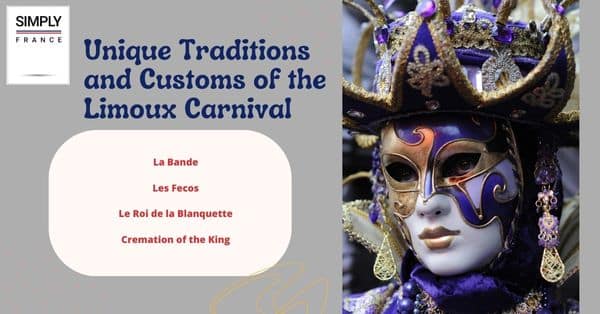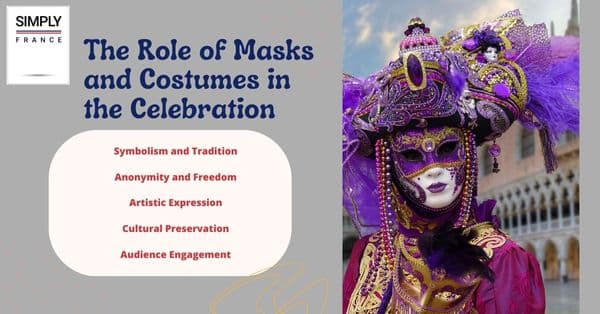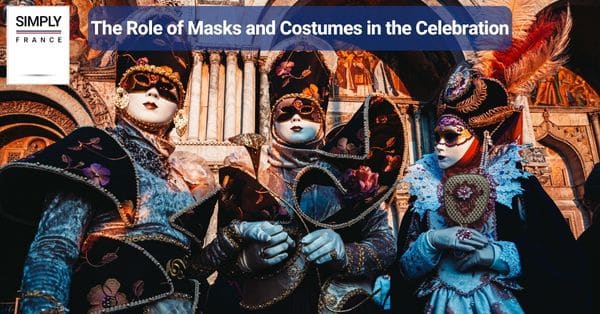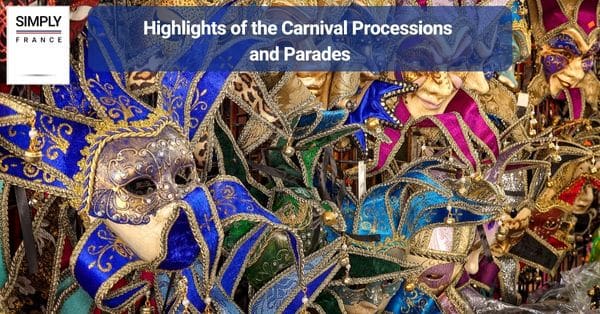Limoux Carnival is a cherished community celebration in France, featuring vibrant festivities and rich traditions. With colorful masks and costumes, lively processions, and captivating performances, it creates a joyous atmosphere. The carnival also offers delicious culinary delights, making it an immersive and engaging experience for all.
Dive into this article to learn more about the origins and history of the Limoux Carnival, as well as its unique traditions and customs, the role of masks and costumes, highlights of processions and parades, music performances, culinary delights, and community engagement.
Origins and History of Limoux Carnival
The origins of the Limoux Carnival can be traced back to medieval times, making it one of the oldest carnivals in France. Rooted in local folklore and pagan rituals, the carnival emerged as a way for the townspeople to indulge in merriment and revelry before the solemn period of Lent.
Over the years, it has evolved and adapted, surviving various social, political, and religious changes. Today, the carnival stands as a testament to the enduring spirit of community celebration, showcasing a blend of historical traditions and contemporary creativity.

Unique Traditions and Customs of the Limoux Carnival
This colorful festival takes place every year in the town of Limoux, located in the Aude department of the Occitanie region in southern France. The carnival is famous for its vibrant parades, lively music, and distinctive customs that have been passed down through generations. Here, we will explore some of the unique traditions and customs of the Limoux Carnival.

La Bande
One of the most notable features of the Limoux Carnival is a group of musicians known as “La Bande.” The band is made up of around 20 members who wear black and white striped shirts and red scarves.
They play traditional instruments such as the clarinet and trumpet while marching through the streets of Limoux during the carnival parades. The music played by La Bande is unique to the Limoux Carnival and has been passed down through generations.
Les Fecos
Another important tradition of the Limoux Carnival is the “Les Fecos” or the “The Uglies.” During the carnival, men dress up in bizarre costumes and masks, making them almost unrecognizable.
They roam the streets of Limoux, poking fun at people and engaging in mischievous behavior. This tradition is said to have originated from the medieval era when peasants would mock the nobility during carnival celebrations.
Le Roi de la Blanquette
One of the highlights of the Limoux Carnival is the crowning of the “Le Roi de la Blanquette” or the “King of Blanquette.” Blanquette is a sparkling wine produced in Limoux, and the King of Blanquette is chosen based on his knowledge and appreciation of this local delicacy. The King is crowned during a ceremony at the town hall, and he leads the carnival parades on his throne.
Cremation of the King
The Limoux Carnival comes to an end with the “Cremation of the King” ceremony. The King’s effigy is burned in a bonfire, marking the end of the carnival festivities. This tradition is said to symbolize the passing of winter and the arrival of spring.

The Role of Masks and Costumes in the Celebration
Masks and costumes play a central role in the vibrant Limoux Carnival. Adding an element of intrigue, creativity, and cultural significance to the festivities. These distinctive adornments contribute to the unique charm and allure of the celebration, captivating participants and spectators alike.

Symbolism and Tradition
Masks and costumes in the Limoux Carnival are not mere decorative elements but carry profound symbolism and traditional meaning. They often represent characters from folklore, mythology, or local legends, embodying cultural heritage and collective memory. These symbolic representations add depth and narrative to the carnival, connecting it to the region’s history and traditions.
Anonymity and Freedom
One of the primary purposes of masks in the carnival is to grant participants a sense of anonymity and freedom. Masked individuals can temporarily escape their identities, allowing them to indulge in playful behavior, social satire, and uninhibited revelry. This anonymity fosters a sense of unity and egalitarianism, creating an atmosphere of shared joy and camaraderie among participants.
Artistic Expression
Costumes in the Limoux Carnival are a platform for artistic expression and creativity. Participants invest time and effort in designing and crafting elaborate costumes that showcase their imagination and skill. From intricate embroidery to colorful fabrics, each costume becomes a unique work of art, reflecting personal style and contributing to the visual spectacle of the carnival.
Cultural Preservation
Masks and costumes in the Limoux Carnival serve as a means of preserving and promoting local cultural heritage. The intricate craftsmanship, traditional motifs, and distinctive designs are passed down through generations, ensuring the continuity of cultural practices. The carnival becomes a living museum of artistic traditions, allowing visitors and locals alike to appreciate and engage with the region’s cultural legacy.
Audience Engagement
Masks and costumes also engage and captivate the audience, adding to the overall allure of the carnival. Spectators eagerly await the procession of vibrant and imaginative characters, marveling at the intricacies and details of the costumes. This interactive experience creates a sense of wonder and excitement, fostering a strong connection between the participants and the community.

Highlights of the Carnival Processions and Parades
These dynamic and exuberant displays of creativity and tradition bring the streets of Limoux alive. Captivating spectators and immersing them in a whirlwind of sights, sounds, and emotions.
1. Grand Floats and Decorations– The carnival processions feature elaborately decorated floats that dazzle with their vibrant colors, intricate designs, and larger-than-life characters. These towering creations are meticulously crafted, often depicting mythical creatures, historical figures, or whimsical scenes.
2. Traditional Dance Troupes– Amidst the procession, traditional dance troupes take to the streets, captivating onlookers with their lively performances. Dressed in traditional costumes, the dancers perform intricate choreography, combining graceful movements with rhythmic music.
3. Musicians and Bands– Music plays a pivotal role in the carnival processions and parades, with musicians and bands adding a pulsating rhythm to the festivities. Brass bands, drummers, and other instrumentalists fill the air with lively melodies, creating an irresistible urge to dance and sway.
4. Street Performers and Entertainers– Alongside the floats and dance troupes, street performers and entertainers captivate the crowd with their dazzling skills and interactive acts. Jugglers, stilt walkers, acrobats, and magicians weave their way through the parade, engaging spectators with their awe-inspiring talents.
5. Themed Processions and Narratives– The carnival processions often follow a theme or narrative, adding a storytelling element to the spectacle. From historical events to mythological tales, these thematic processions transport spectators into different worlds, captivating their imagination and evoking a sense of wonder.

Music, Dance, and Performances at Limoux Carnival
Music, dance, and performances are integral elements that bring the Limoux Carnival to life. Infusing the celebration with rhythm, energy, and a sense of enchantment. Throughout the carnival, the streets resound with the melodies of brass bands, drummers, and musicians who create a vibrant and infectious atmosphere.
Traditional dance troupes, adorned in colorful costumes, captivate the audience with their graceful movements and intricate choreography, adding a touch of elegance to the festivities. In addition, street performers and entertainers showcase their remarkable talents, mesmerizing spectators with juggling acts, acrobatics, and magical illusions.

Culinary Delights: Food and Drinks of the Carnival Season
As a celebration deeply rooted in local traditions, the carnival season brings forth a culinary experience that delights both locals and visitors. From traditional dishes to festive treats, this article explores the mouthwatering culinary delights that make the Limoux Carnival a feast for the senses.
Galette des Rois: The carnival season kicks off with the indulgence of Galette des Rois. A traditional cake enjoyed during Epiphany celebrations. This delicious pastry is made with flaky puff pastry and filled with a creamy almond filling.
Fritons: Fritons are a savory treat that holds a special place in the hearts of carnival-goers. These crispy and flavorful pork cracklings are a popular snack enjoyed during the festivities.
Crémant de Limoux: No celebration in the Limoux region is complete without a glass of Crémant de Limoux. A sparkling wine is produced in the area. This renowned wine is made using the traditional Champagne method, resulting in delicate bubbles and a refreshing taste.
Cassoulet: Cassoulet, a hearty and comforting dish, takes center stage during the carnival season. This slow-cooked casserole is a flavorful blend of white beans, and various types of meat such as pork, sausage, and duck confit, all simmered together in a savory broth.
Sweet Treats: The carnival season also brings an abundance of sweet treats that are hard to resist. Colorful candies, sugary fritters known as bugnes, and beignets filled with cream or fruit are just a few of the delightful confections that grace the carnival stalls.

Community Engagement and Participation in Limoux Carnival
Community engagement and participation are at the heart of the Limoux Carnival. The carnival brings together people from all walks of life, inviting locals and visitors alike to actively engage in the festivities. From costume preparations to float construction, community members enthusiastically contribute their time, skills, and creativity to make the carnival a resounding success.
This active participation fosters a deep sense of pride and belonging, as individuals come together to showcase their cultural heritage, strengthen social bonds, and create cherished memories that will be passed down through generations. The Limoux Carnival stands as a testament to the enduring spirit of community engagement. Where the collective joy and involvement of its participants ensure that the celebration remains a vibrant and cherished tradition.

In conclusion
The Limoux Carnival is a vibrant and enchanting celebration that has been bringing people together for centuries. From elaborate masks and costumes imbued with symbolism to captivating processions featuring grand floats and traditional dance troupes, the carnival offers an unforgettable experience of cultural heritage and tradition.
With its tantalizing culinary delights and lively music, this joyous event captures the spirit of community engagement, inviting everyone to come together and revel in a celebration of shared allure and amusement. The Limoux Carnival is an unforgettable experience that unites people from all walks of life, leaving lasting memories for generations to come.


